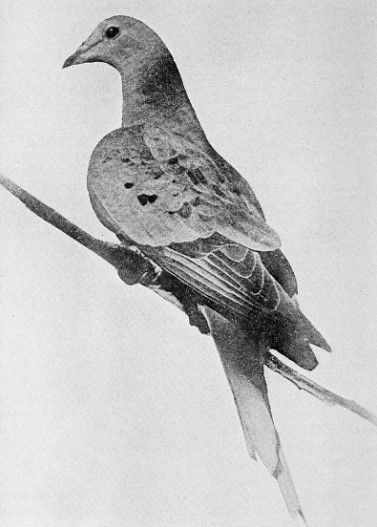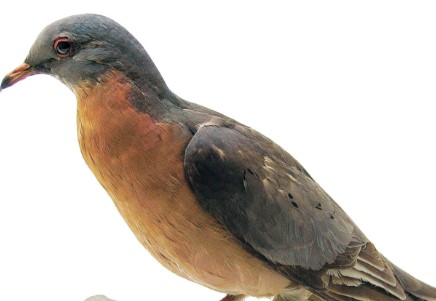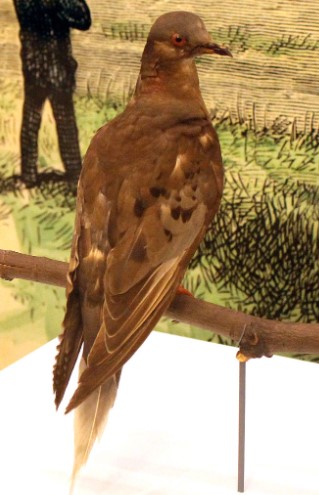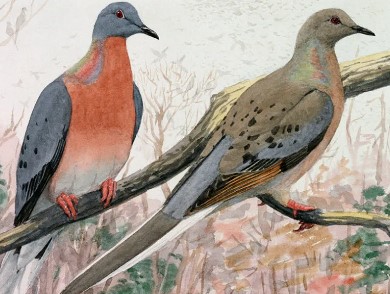







The passenger pigeon is an extinct pigeon that inhabited eastern North America during the 1800s. They were found to the east of the Rocky Mountains from the Great Plains to the Atlantic Coast in the east. It also lived to the south of Canada and the north of Mississippi. This bird constantly migrated in search of and shelter. They were first seen by Europeans who migrated to North America in the 19th century and hunted them by the millions for their meat.
The passenger pigeon was sexually dimorphic in size. Both the male and female were bigger than most modern-day pigeons and doves and also had long pointed tails. The male was gray on the upper parts and had a pinkish color on the underparts of his body. It also had iridescent brown feathers on the neck and black spots in the wings. The female was duller and browner than the male. The juvenile was similar to the female but had no iridescent feathers.
The closest living relative of the passenger pigeon is the band-tailed pigeon which is in the family of New World pigeons. This pigeon migrated in large flocks, searching for food, shelter, and breeding grounds. Its diet was mainly on the fruit found in beeches and oaks. It also probably changed its diet depending on the season. In the fall, winter, and spring, it ate beechnuts, acorns, and chestnuts. In the summer, it ate berries and softer fruits like blueberries, grapes, cherries, mulberries, pokeberries, and bunchberries. It also ate worms, caterpillars, snails, and other invertebrates. They were preyed on by hawks, owls, weasels, skunks, and arboreal snakes. They bred primarily in the Great Lakes. The eggs were laid during the first weeks of April. They probably laid a single egg; however, sometimes two have been reported in the same nest. The egg was incubated by both parents for 12 to 14 days and the chicks were fed crop milk which is similar to modern-day pigeons.
They were hunted by Native Americans but all that changed when the Europeans arrived during the 19th century. Hunting began on a massive scale as pigeon meat got cheap. Widespread deforestation destroyed the habitat that they probably used for breeding and these factors led to the extinction of the passenger pigeon. The last known passenger pigeon named Martha, who lived at the Cincinnati Zoo, died in 1914. She used to have a male named George, but he died on July 10, 1910.